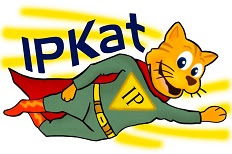Old + New = learning experiences
There is a new cooperation agreement signed between the old and the new world. Mr Luiz Otávio Pimentel, the Brazilian Instituto Nacional da Propriedade Industrial (INPI)’s president recently signed a cooperation agreement with the UK Intellectual Property Office (UKIPO). The aim of this agreement is to exchange experiences, and of course, collaboration between the offices and the quality of examinations procedures.
 The exchange of experiences is based on the role of the Academy (the Educational sector) centring in the significance of intellectual property to society. In order words, the role that it has in raising awareness about intellectual property issues. Back in November 2015, the UKIPO launched a webpage “giving schools and colleges access to teaching resources to help students learn about intellectual property.” The project was funded by the European Intellectual Property Office (EUIPO, previously known as OHIM).
The exchange of experiences is based on the role of the Academy (the Educational sector) centring in the significance of intellectual property to society. In order words, the role that it has in raising awareness about intellectual property issues. Back in November 2015, the UKIPO launched a webpage “giving schools and colleges access to teaching resources to help students learn about intellectual property.” The project was funded by the European Intellectual Property Office (EUIPO, previously known as OHIM).
The INPI and UKIPO agreement is also to exchange of information on The Patent Prosecution Highway (PPH) - the accelerated patent prosecution procedures by way of sharing information between patent offices. Moreover, it includes the examination and study of a version adapted to Brazilian of the British Lambert Toolkit. This tool is based on universities and business collaboration agreements -- the aim is to “assist academic or research institutions and industrial partners who wish to carry out research projects together.”
Finally, Brazil and the UK Brazil exchanged their views on bilateral trade relations among other issues that took part on the Joint Economic and Trade Committee (JETCO) meeting.
For more information regarding JETCO, see the joint-statement here.
The INPI and UKIPO agreement is also to exchange of information on The Patent Prosecution Highway (PPH) - the accelerated patent prosecution procedures by way of sharing information between patent offices. Moreover, it includes the examination and study of a version adapted to Brazilian of the British Lambert Toolkit. This tool is based on universities and business collaboration agreements -- the aim is to “assist academic or research institutions and industrial partners who wish to carry out research projects together.”
Finally, Brazil and the UK Brazil exchanged their views on bilateral trade relations among other issues that took part on the Joint Economic and Trade Committee (JETCO) meeting.
For more information regarding JETCO, see the joint-statement here.













